commentary Commentary
Commentary: You can enjoy jogging even by yourself
Remember too not to go in groups, maintain a safe distance and stay in your neighbourhood, says Ian Tan.
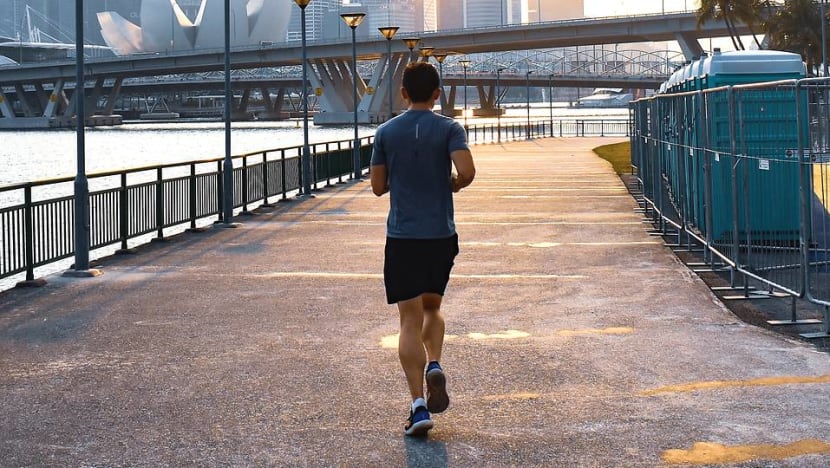
(Photo: Unsplash/Gervyn Louis)
SINGAPORE: If you’re working from home due to the coronavirus pandemic, you may have more free time available as you no longer have to commute to work.
I have been jogging since I was in secondary school and I jog more than ever now as an adult to keep fit.
I’ve learned the following tips over years of trial and error, and they should work for most people.
JOGGING IS NOT ABOUT PAIN
I have a theory that many Singaporeans dislike jogging because of the physical tests we had to endure in school, and for the guys, in National Service.
Back then, we were forced to run 2.4km at a really fast pace. If you weren’t running at a pace that would make your heart feel like bursting (about 10 to 12 minutes for the distance), you would fail the overall test.
READ: COVID-19: Our guide to staying home and surviving the circuit breaker period
READ: Commentary: Cabin fever during this COVID-19 outbreak can be overcome
I believe this has created the wrong mindset with many people. If your only experience with jogging is this ridiculously strenuous run, why would you ever think that jogging is enjoyable?
My advice is to forget that 2.4km running test. Jogging can be a leisure activity. You don’t actually have to run fast at all.
GO AS SLOWLY AS YOU LIKE
Unless you are training for the dreaded 2.4km test or some other race, you can jog as slowly as you like.
Jogging is about getting your heart rate up. This in turns builds cardiovascular health, overall immunity – and as a bonus, a nice, clear complexion.
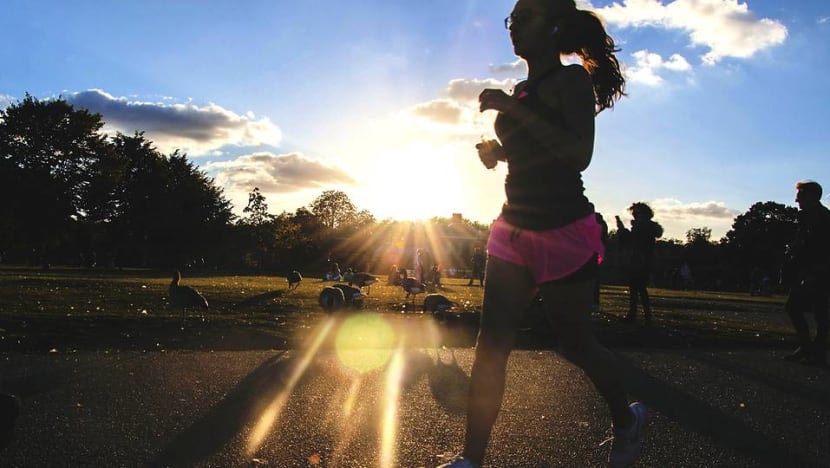
READ: Commentary: COVID-19 - it’s harder to stay sane without sport
How slowly can you jog? It varies by age, but for middle-aged guys like me (I’m 44 this year), seven minutes per kilometre is ideal.
Five or six minutes per kilometre is too fast – someone running at this pace will look pained, and will experience a fast to moderate buildup of lactic acid.
Eight minutes per kilometre is slow, but still good. A jogger will be able to go a really long distance at this relaxing pace.
IT’S NOT THE SPEED ANYWAY, IT’S THE DISTANCE
Many people jog to burn calories, especially after a sinful meal. When it comes to burning calories, distance matters much more than speed.
Whether you run at high or low speeds over 2.4km, you still burn about the same 150kCal – about the amount of calories in a can of Coke. You would need to jog for at least 4km to 5km before your body burns a decent amount of calories.
READ: Commentary: Mandatory nutrition labels? The bitter truths about our sugar problem
READ: Commentary: Running may help you live longer but more isn’t necessarily better
That’s why I jog at least 6km each time – it doesn’t take too long and it burns about 375kCal, the equivalent of a light meal.
BUT START WITH VERY SHORT DISTANCES FIRST
If you haven’t been jogging regularly, you should start with very short distances. I’m talking 400m to 500m first, not even 1km.
This is because any form of running is a high-impact sport and you need to get your feet and legs acclimatised first.
Take your time to increase your distance. When I first got back to regular jogging in the late 2000s, I kept at the 2km limit for over a year. It wasn’t till years later that I gradually increased the distance to 6km, as my body got used to jogging.
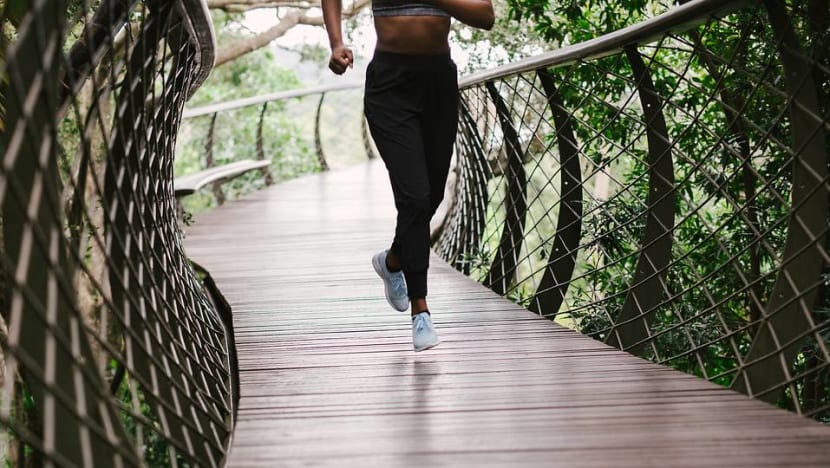
There’s also no need to do much stretching or warm-up. Some stretching exercises may even result in injury if done incorrectly. Just start jogging and go at a comfortable pace.
If you do feel any strain in your legs or feet, slow down dramatically and try to identify the source of the pain. It is often caused by poor fitting shoes or shoes with poor ergonomics.
I won’t go into the right type of shoes to wear here, except that you should get the lightest possible running shoe. You will recognise them by the slight arch of the sole curving up towards the toe area.
Avoid cross-trainers, basketball shoes, tennis shoes, walkers and other non-running shoes. And the price of the shoe doesn’t matter, so don’t buy the most expensive one.
READ: Commentary: Exercise can fast-track your workplace well-being – here’s why and how
READ: Circuit breaker classes: Yoga, tuition and gyms move online as Singapore gets used to operating in virtual worlds
RECORD YOUR DATA
Recording your running data – that is, your speed and distance covered– is an incredibly strong motivator to keep running regularly. So what’s the best way to measure your jogging speed and distance?
Using a GPS running watch will help automate the data collection. But if not, you could use a simple stopwatch too, though you’d have to record your running times and distance manually.
JOGGING IS NOT THE SAME AS WALKING
I like walking.
I’m a big proponent of walking 10,000 steps a day, even though it was originally designed as a Japanese marketing campaign for pedometers. 10,000 steps equates to about 8km distance and is good for blood circulation.
READ: Commentary: How to walk more in our busy lives
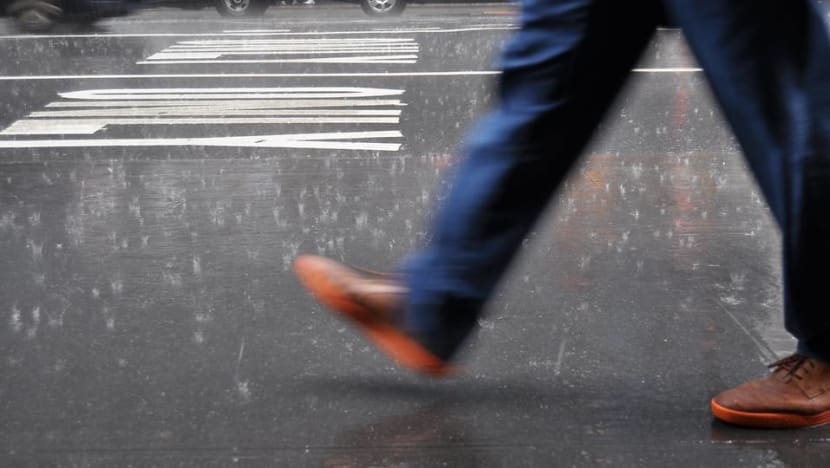
However, from my experience, casual walking does not provide the same health benefits as jogging. Even if you were to jog very slowly, you will elevate your heart rate more, sweat more and drive more blood circulation.
If your goal were to burn fat, jogging covers the same distance in half the time and burn two times more calories per minute.
BREATHE SLOWLY, NOT FAST
A misconception about jogging is that you need to breathe frantically to demonstrate you are exerting effort. It’s the same as how some people begin sprinting at the starting line of a mass run, and then get exhausted after a few hundred meters – and get overtaken by the steady joggers.
But breathe slowly and smoothly, and you will find that you will be running several paces with each breath.
This is important as when you artificially try to breathe too fast, you actually over-exert your lungs. Jogging should be relaxing and so should your breathing.
And don’t swing your arms too much. Momentum is good, but just don’t flail wildly and keep your head straight looking forward to minimise energy wastage.
READ: Commentary: It's better to exercise before breakfast
READ: Commentary: Forget dinner dates. Exercising with your partner leads to a stronger relationship
HAVE REST DAYS
Technically, if you don’t jog long distances each time, you can jog daily without any harm to your body.
However, for most people, I recommend having a day of rest in between each jog.
This means that you should jog three to four times a week. Two times a week is okay, but it’s not going to be much use if burning calories is your primary goal.
And oh yes, please jog when the weather is cool. I always think people who jog in the tropical noon heat are crazy.
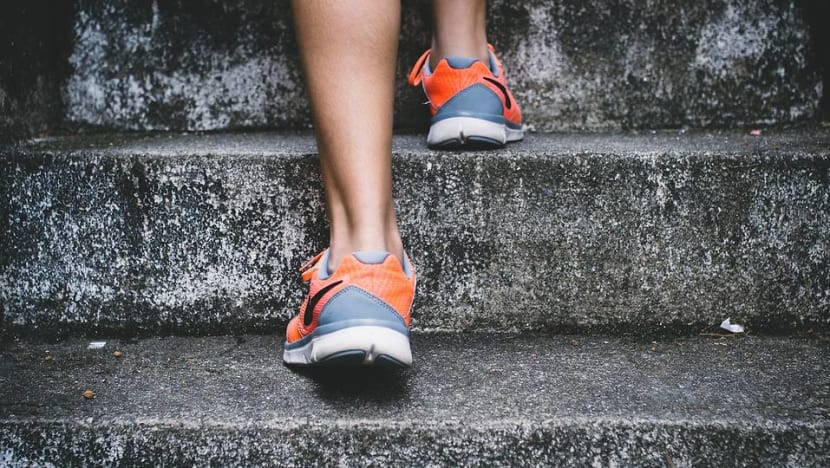
CAN I STILL RUN OUTDOORS IN SINGAPORE?
Singapore’s circuit breaker rules allow for outdoor exercise – but not in groups. Those exercising outdoors are reminded to maintain a safe distance from others, and to stay in their neighbourhoods.
READ: COVID-19: Parents not allowed to drop children off daily at grandparents’ place, open-air stadiums to close
LISTEN: How many stars will you give Singapore F&B this COVID-19 season?
While wearing a mask outdoors is compulsory now, you don’t need to wear one if you’re running or jogging. You must put one on once you stop or resume walking, however.
Stay safe and healthy.
Ian Tan is a sales and marketing professional, former journalist and author of the book Anyone Can Lose Weight. This commentary is an abridged version of the author’s blog post.












